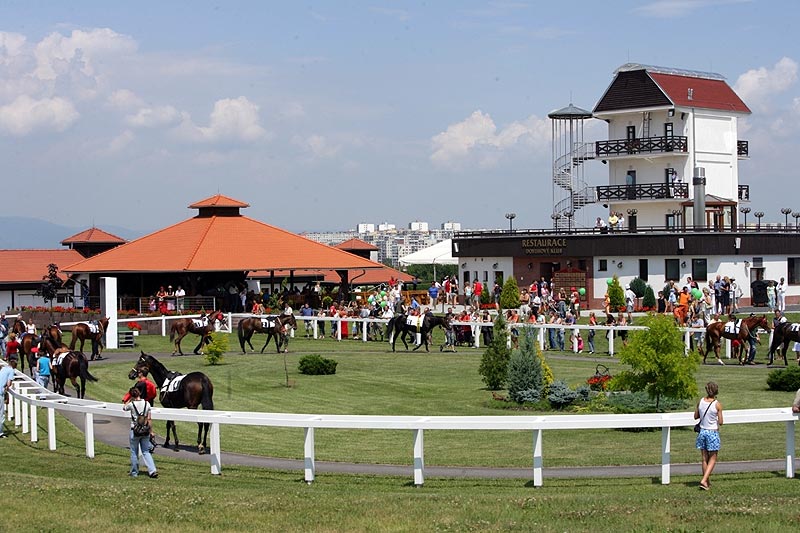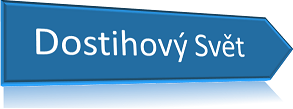August 2017 newsletter

July 2017 has been a warm month, though there have only been a limited number of very hot days, and there has been some rain. In some places, though not in Prague 6, there have been heavy thunderstorms and hailstorms. There has not been enough rain to cause flooding in major rivers, although, as I have often pointed out, far too many places in the Czech Republic are only 48 hours of steady rain away from flooding.
I make this statement about our weather in July without confidence, as I have for the last two months spent my working days in an air-conditioned intelligent office. Let me share with you two impressions that I have from my new working environment. Firstly, it is strange - and rather unpleasant - to be cut off from the real weather beyond the glass wall and the streaky grey plastic shroud (known as the Condom) that protects my colleagues and me from the reality outside. Do I really want to be separated so thoroughly from the real world (the noises, the changes in weather, the natural light of the sun, and a clear view of what is going on out there)? Secondly, intelligent buildings - like intelligent humans - are quite often deficient in common sense.
The two-month summer period, between Czech Derby day and the re-opening of our major racecourses at the end of August, used to be more colourful when there were more meetings at the up-country courses. In July 2017, there were five weekends and two public holidays – a total of 12 potential race days. However, there will have been just seven race days, and only Světlá Hora and Mimoň have held real up-country meetings. Lysá is suburban rather than up-country. The other race days have been at Grade A courses (Karlovy Vary, twice, Most and Pardubice).
It has been suggested to me that fewer and fewer owners like to have low-grade horses and to run them on 1400-metre circuits where the quality of the turf and the tightness of the bends is worrisome. Or to run even a low-grade chaser or hurdler on rock-hard ground at a local meeting in July and August.
The meeting at Most on Friday, July 21st, was an interesting venture. For many years, there has been talk of getting PMU to carry Czech races, but we are only now making serious progress. This was the second PMU (Pari Mutuel) meeting this year. The two PMU meetings this year, at Prague Velká Chuchle on Friday, June 9th and now at Most, both attracted over EUR 700 000 of turnover on PMU, for five races. I am told this is considered not bad. Certainly, both of these meetings were a good advertisement for Czech racing. They were run at decent racecourses with modern facilities. There were large fields, with open betting. All the technical equipment functioned properly. No jockeys had to be reprimanded for overuse of the whip.
The Jockey Club had appealed to owners to enter their horses for these PMU meetings, and the response was good. However, the meeting at Most was held on a date when owners of Category III and Category IV handicappers were looking for an opportunity to run their horses on good turf. The large fields were not necessarily due to arm-twisting.
Talking of arm-twisting, owners have been asked to enter their good horses for the European Jockeys Cup meeting, which will be run at Prague Velká Chuchle on Saturday, September 2nd (please note that this is a Saturday meeting). Ideally, each of a dozen international jockeys will have a ride in each of the EJC races. The EJC meeting was a major success in 2015 and in 2016, and the 2017 renewal is looked forward to by everyone here. I think the jockeys are happy to come to Prague, too. It is really an attractive and hospitable city, and there is even some quite good prize money on offer for the four major races on EJC day.
My racegoing is mainly limited to the racecourses that are easily accessible by public transport from Prague 6. That is to say, Prague Velká Chuchle, Pardubice, Most, Karlovy Vary and Lysá-nad-Labem. With more dedication, I could get to all the courses in the country for a day trip.Getting to Kolesa would involve overcoming my aversion to taxi drivers. The bus from Světlá Hora to Bruntál very narrowly misses, or perhaps narrowly catches, the conection with the last train to Prague. The last time I went there, I remember a crowd of us running up the surprisingly steep and long hill from the railway station bus stop, which was surprisingly far from the station, and being pleased that the train was running late. I was not impressed by Bruntál. I was glad not to have to spend a dreary Saturday evening there, and a night in a dreary hotel.
My main contact with racing this month has been in connection with Most racecourse. The PMU meeting there was pleasant. PMU may decide that it needs Czech racing at times when its clients are getting out of bed and are looking for a betting opportunity. The first race was at ten minutes past eleven on a Friday. Eleven in the morning, I hasten to add. At 11 at night, there is presumably some racing to bet on, on the west coast of the USA.
It was a nice warm Friday morning, with a pleasant breeze up on the revitalized slag heap where Most racecourse is located. There was a surprisingly good crowd, but presumably plenty of people, like me, can easily enough take a day off in the summer months.
In September, it will be the 20th anniversary of the first race meeting at Most. Each year, the racecourse looks less like a converted moonscape, and more like a verdant leisure area with a view over the colourfully painted prefabricated blocks of flats that are the dominant feature of Most.
I spent some time this month translating a fine brochure for Hipodrom Most, a.s., the company that runs the Most racecourse area. A majority holding in the racecourse was bought in May 2016 by the Charvát Group, which is directed by Dr Jiří Charvát, president of the Czech Jockey Club. The other major shareholder is the Town of Most. I can reveal that Jiří Charvát declares in the brochure, which has already appeared in Czech language, that the number of race meetings at Most will be increased, and that the aim is to “bring the racecourse to life.”
Jiří Charvát also declares that he wants to turn the racecourse round, i.e. to run the races left-handed. At present, there is a downhill finish. As he rightly points out, it is stupid to have a downhill finish when a standard uphill finish can be arranged. I think it would not be difficult or particularly expensive to turn the course round. However, it would be necessary to build a relocated judge’s box and photofinish facilities, and also some terraces facing the new winning post. Dr Charvát and the Town of Most are already discussing this matter.
The brochure that I translated is now with the printer. It tells the remarkable story of the efforts made over a period of 25 years before the first race meeting at Most, in 1997, to establish a racecourse on the vast Velebudice slag heap. Large areas of north Bohemia were devastated in the 20th century by open-cast brown-coal mining, and by the acid rains caused by combusting the coal. Most racecourse is a tribute to the working people of the Most district, and to the remarkable vision and dedication of the people who have worked to revitalize the devastated area. The outcomes have not always been ideal, but the dedication of a number of remarkable individuals deserves to be recognized and recorded. Jiří Charvát is adding his name to a list of notable people that I will write about here on the Dostihový svět website, when I make time.
